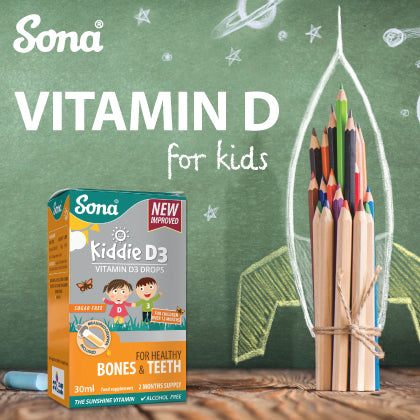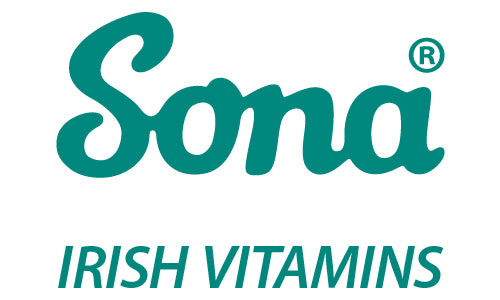
Vitamin D for Children
It is important that children are receiving an adequate amount of vitamin D to build strong bones and teeth, support muscle function, neurotransmission, and cell division. Vitamin D deficiency in children can cause rickets, a severe disease that affects bone development, and can cause bone pain, poor growth, as well as soft, weak bones that can lead to bone deformities.
In this article you can find:
- What is vitamin D?
- How can I ensure my child is receiving enough vitamin D?
What is vitamin D?
Vitamin D is a type of fat-soluble vitamin. Fat-soluble vitamins refer to the vitamins that are absorbed along with fats in the diet and can be stored in the body's fatty tissue. Vitamin D plays a key role in numerous important bodily processes. This includes helping the body absorb other nutrients, ensuring that muscles and bones work efficiently, regulating neurotransmitter synthesis, helping to support the immune system, supporting heart health, as well as regulating insulin levels.
How can I ensure that my child is getting enough vitamin D?
Vitamin D is sourced primarily from the sun (we obtain approximately 80-90% of it this way). It is seasonal and cannot be made during the winter, while the amount made in the summer is subject to sunshine, weather, and other factors. In Ireland, it can be produced from 10-15 minutes of sun exposure from late March to late September.
Vitamin D can also be found in some foods. This includes mackerel, salmon, sardines, herring, tuna, red meat, liver, fortified foods (breakfasts cereals, dairy products, orange juice, infant formulas), egg yolks, as well as mushrooms that have been grown in ultraviolet light (shiitake mushrooms, portobello mushrooms).
The best way to ensure that your child is receiving the recommended intake of vitamin D is through supplementation.
Sona Kiddie D3 is a delicious tasting Vitamin D3 supplement specially formulated for children aged between 1-12 years old. Each serving contains 400 IU (10ug) of vitamin D.
References
- EHRLICH, G. (2010). Sunshine and Vitamin D. A Comprehensive Guide to the Benefits of the “Sunshine Vitamin”. The Journal Of Rheumatology, 37(2), 475-475. doi: 10.3899/jrheum.091173.
- Tanner, S., & Harwell, S. (2015). More than healthy bones: a review of vitamin D in muscle health. Therapeutic Advances In Musculoskeletal Disease, 7(4), 152-159. doi: 10.1177/1759720x15588521.
- Sahay, M., & Sahay, R. (2012). Rickets-vitamin D deficiency and dependency. Indian Journal Of Endocrinology And Metabolism, 16(2), 164. doi: 10.4103/2230-8210.93732.
- Taylor, S. (2020). Vitamin D in Toddlers, Preschool Children, and Adolescents. Annals Of Nutrition And Metabolism, 76(2), 30-41. doi: 10.1159/000505635.
- Vitamins and minerals - Vitamin D. (2021). Retrieved 14 July 2021, from https://www.nhs.uk/conditions/vitamins-and-minerals/vitamin-d/.
- Vitamin D for babies 0 to 12 months. (2021). Retrieved 21 July 2021, from https://www2.hse.ie/wellbeing/child-health/vitamin-d-for-babies-0-12-months.html.
